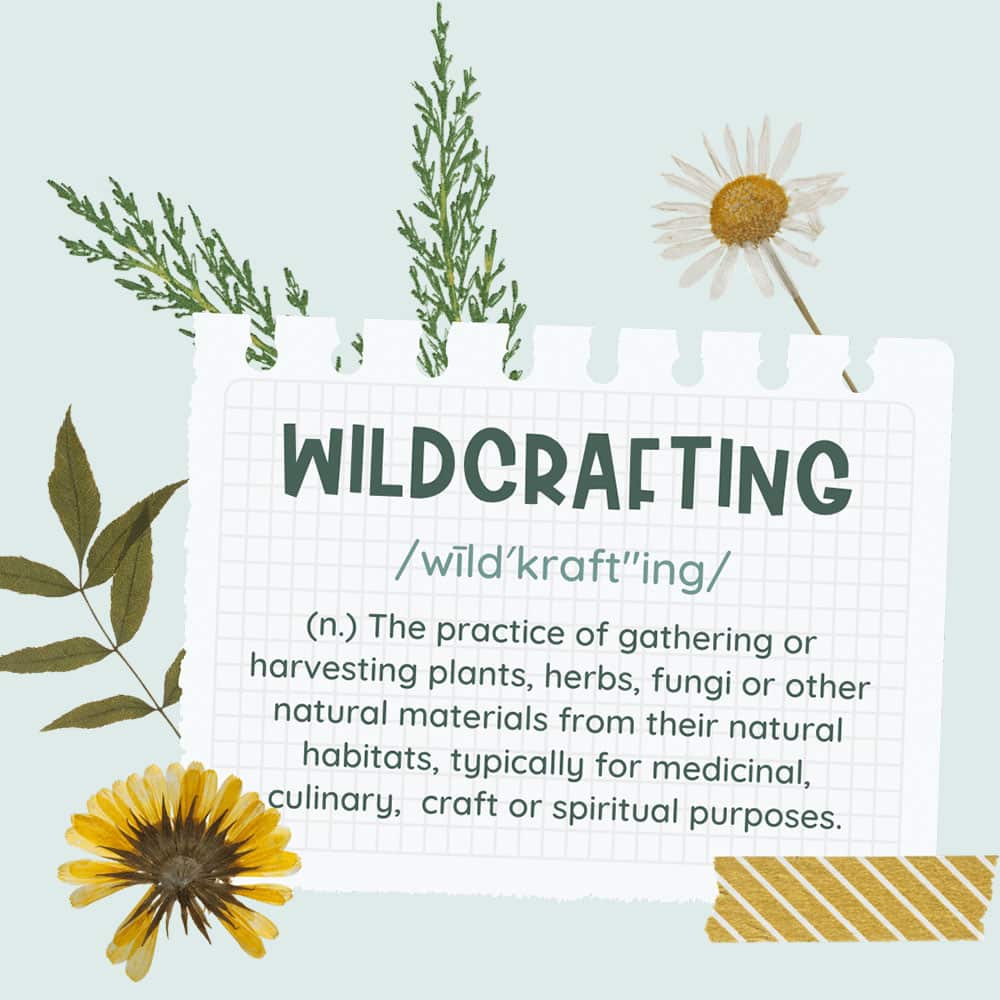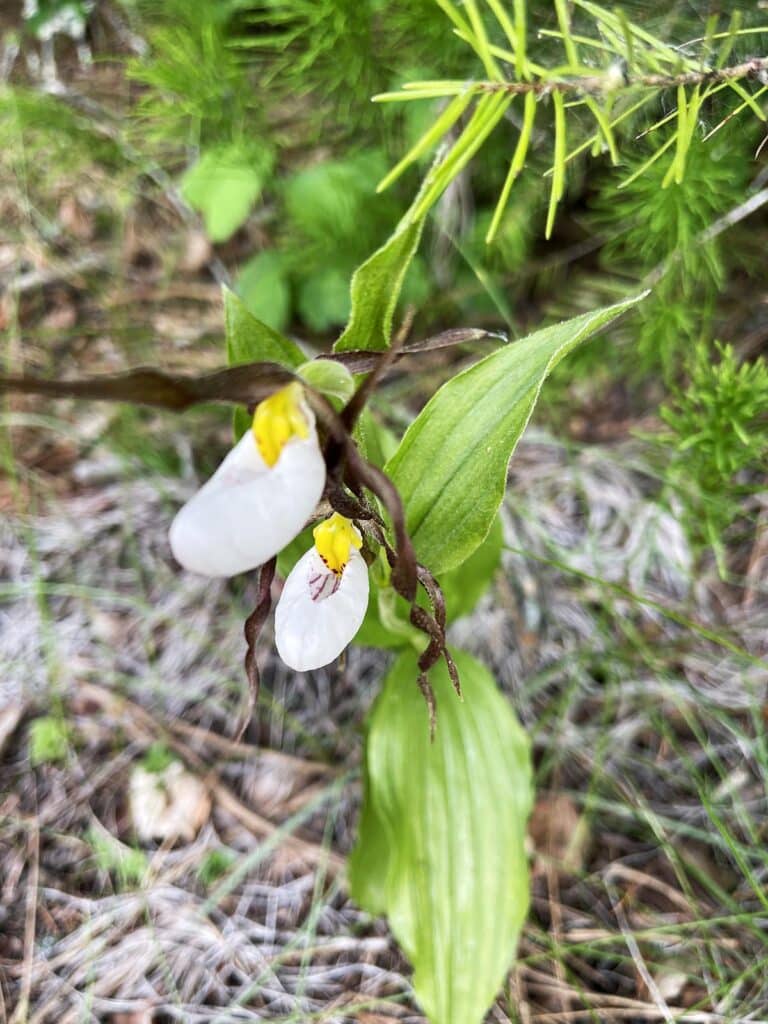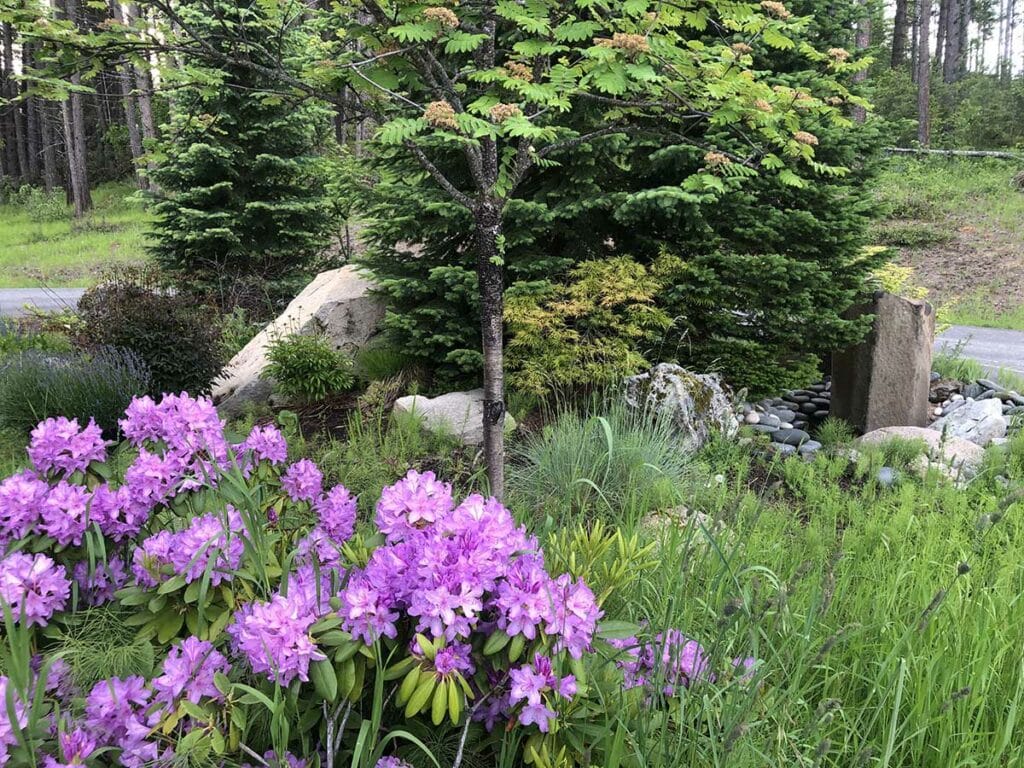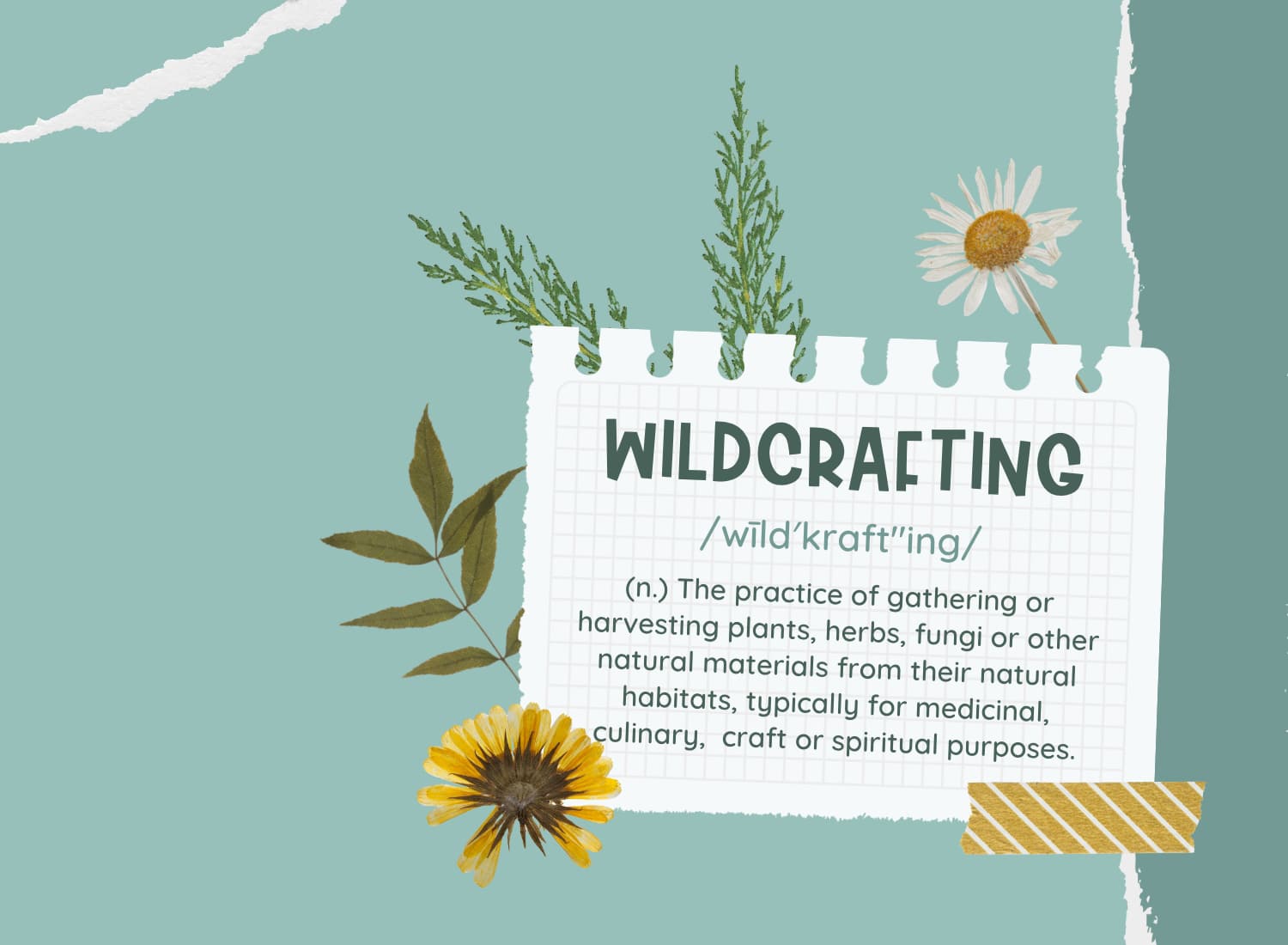We use the term ‘wildcrafting’ often, but what does it mean?

Wildcrafting, sometimes simply called ‘foraging’, refers to the practice of harvesting plants and herbs from their natural habitats for medicinal, culinary, craft or spiritual purposes.
Ethical wildcrafting emphasizes the reciprocal relationship between humans and the natural world, viewing wildcrafting as an opportunity for mutual exchange and benefit.
In other words, making an effort to give back as much as we take.
Sustainability
This is the basic rule of ethical wildcrafting: sustainability.
Ethical wildcrafting involves respecting the natural balance and biodiversity, minimizing harm to ecosystems and protecting the long-term survival of the plant populations. Always strive to minimize your impact on the environment.
Before engaging in wildcrafting, it is crucial to thoroughly research and understand the plants and herbs you intend to harvest. Learn about their growth patterns, habitats, population dynamics and any local regulations or guidelines related to their collection.
Best harvesting practices
Always use sharp, clean tools to minimize damage to plants during harvesting. Collect plant material in a sustainable manner, focusing on leaves, flowers or fruits while leaving the roots intact whenever possible. Avoid trampling or damaging other plants and habitats.
Harvest plants during appropriate seasons and life stages. Be mindful of the plant’s growth cycle, ensuring that it’s had enough time to reproduce and disperse its seeds.
Don’t harvest from areas where plant populations are already threatened. Avoid taking any plants that are rare, endangered or protected.
Respect private property rights and obtain permission before collecting on private lands.
Conscious consumption
Don’t take more than you need. Period.
If we wildcrafters gather large quantities of plants without considering their ability to regenerate, it can deplete local populations and have cascading effects on other species that depend on those plants for food or habitat.
Do no harm
Wildcrafting should never involve damaging or destroying ecosystems.
Only harvest a small portion of any plant population and never to take too many plants from any one cache or too many buds or leaves from any one tree. Remember, flowers are often a plant’s means of reproduction and leaf buds (as with cottonwood trees) become leaves that the trees need to collect energy in order to survive the winter! Instead, look for fallen branches from which to gather buds as opposed to plucking them off a live tree. Additionally, avoid taking a tree’s terminal buds (the bud growing at the tip of each stem) as these are the points from which the tree will put on new growth.
Never ever injure a tree to obtain resin and don’t take resin from an open wound. It’s there to seal the wound and protect the tree from pathogens while it heals. Collecting resin from an open wound disrupts this natural healing process and increases the risk of infection.
Leave no trace
Practice “leave no trace” principles by minimizing your impact on the environment. Keep your footprint small and strive to leave the place as you found it.
Pack out any trash or waste and make an effort to recreate your harvesting spot by refilling holes and re-scattering pine needles or twigs… the goal is to make it look like you were never there!
Replant any root fragments that may regenerate the plants you have taken. Adopt responsible harvesting techniques to ensure the survival and regeneration of plants.
Develop a sense of stewardship
Take the time to understand and appreciate the interconnectedness of the ecosystem and your role in its preservation. Acknowledge the gifts provided by the natural world and practice reciprocity in return!
Recognize and respect the traditional knowledge and rights of indigenous communities regarding wildcrafting practices. If appropriate, seek guidance from indigenous peoples and support their initiatives for sustainable resource management.
Be a conservationist
Support organizations and merchants who promote sustainable wildcrafting practices and work towards maintaining biodiversity. Nonprofit organizations such as the United Plant Savers are dedicated to protecting native medicinal plants and their habitats in North America by promoting sustainable wildcrafting practices. In particular, they work towards the conservation of at-risk plant species.
A couple of examples of at-risk plants in my neck of the woods include Cypripedium spp. aka the lady’s slipper orchid (pictured) and trillium (Trillium spp.) Familiarize yourself with endangered or threatened plant species in your area and avoid harvesting them.
United Plant Savers offers a wonderful compilation of herbal analogs to at-risk plants compiled by herbalist Jane Bothwell. The list offers suggestions for alternative plants with similar actions to the at-risk ones.
Looking for lady’s slipper’s antispasmodic and nervine actions to calm a cough or soothe menstrual cramping? Try lemon balm or skullcap instead!

Cypripedium spp.
In many cases, it’s as simple as using a cultivated version of the endangered plant to reduce the pressure on wild populations. Support local farmers and growers who prioritize organic and regenerative farming practices.
Alternatively, consider cultivating and propagating wild plants in your own garden or land. For every plant or material harvested, strive to restore or enhance the environment in some way. This could involve planting native species or participating in habitat restoration projects.
Pro tip: Native and medicinal plants make killer landscaping! By selecting native and medicinal plants, you contribute to the conservation and restoration of local ecosystems.
In addition to helping to restore biodiversity, attract pollinators and support local wildlife, native plants are well adapted to the local ecosystem, making them resilient and easier to maintain than their non-native counterparts. They tend to be less susceptible to disease and require less water and fertilizer, contributing to a more sustainable and eco-friendly landscape.
Check with your local extension office, conservation societies and gardening associations for guidance on what plants are native to your area and where to source them.

Being a responsible wildcrafter means recognizing that we are part of a larger ecosystem and have a responsibility to act in harmony with it. By adopting a mindset that respects the plant and its environment, we help to ensure that they will always be there for the next person who needs them.
What kinds of things do you do to reduce your wildcrafting impact? ♥



One Response
awesome description of wildcrafting and what it is along with the aspects that we should follow to assure these species are here for future generations.